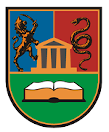Please use this identifier to cite or link to this item:
https://scidar.kg.ac.rs/handle/123456789/22686Full metadata record
| DC Field | Value | Language |
|---|---|---|
| dc.contributor.author | Piperac, Pavle | - |
| dc.contributor.author | Terzic Supic, Zorica | - |
| dc.contributor.author | Maksimovic, Aleksandra | - |
| dc.contributor.author | Todorović, Jovana | - |
| dc.contributor.author | Karic, Svetlana | - |
| dc.contributor.author | Soldatovic, Ivan | - |
| dc.contributor.author | Cvejtkovic, Smiljana | - |
| dc.contributor.author | Jeremic Stojkovic, Vida | - |
| dc.contributor.author | Petricevic, Simona | - |
| dc.date.accessioned | 2025-11-14T09:59:58Z | - |
| dc.date.available | 2025-11-14T09:59:58Z | - |
| dc.date.issued | 2024 | - |
| dc.identifier.issn | 0004-1254 | en_US |
| dc.identifier.uri | https://scidar.kg.ac.rs/handle/123456789/22686 | - |
| dc.description.abstract | Pedagogical work, especially with preschool children, is one of the most stressful professions, and the incidence of stress-related illnesses among preschool teachers is higher than in the general population. The aim of this cross-sectional study, conducted between October 2018 and April 2019, was to examine the prevalence of the burnout syndrome in a representative sample of 482 preschool teachers in Serbia and the factors associated with it. For this purpose, the participants completed a questionnaire composed of six sections: the socio-demographic and socio-economic characteristics, health and lifestyle characteristics, workplace and employment characteristics; Copenhagen Burnout Inventory (CBI); Beck Depression Inventory (BDI), and the Zung Self-Rating Anxiety Scale (SAS). The frequency of the total burnout was 27.1 %. The frequency of burnout on the CBI was 25.4 % for personal burnout, 27.0 % for work-related burnout, and 23.4 % for client-related burnout. Multivariate logistic regression analysis with total burnout as an outcome variable showed that being single (OR: 0.18; 95 % CI: 0.05–0.58), having poor (OR: 6.05; 95 % CI: 1.05–34.91), or average (OR: 3.60; 95 % CI: 1.57–8.25) self-rated health, not having didactic/play tools (OR: 2.71; 95 % CI: 1.21–6.04), having a higher score on the BDI (OR: 1.19; 95 % CI: 1.09–1.29) or SAS (OR: 1.10; 95 % CI: 1.03–1.18) was significantly associated with the total burnout among our participants. Our study shows the worryingly high prevalence of the burnout syndrome among preschool teachers in Serbia and points to its association with mental health issues, depression, and anxiety. | en_US |
| dc.language.iso | en | en_US |
| dc.relation.ispartof | Archives of Industrial Hygiene and Toxicology | en_US |
| dc.subject | Copenhagen Burnout Inventory | en_US |
| dc.subject | Zung Self-Rating Anxiety Scale | en_US |
| dc.subject | Beck Depression Inventory | en_US |
| dc.subject | demographics | en_US |
| dc.subject | kindergarten | en_US |
| dc.subject | lifestyle | en_US |
| dc.subject | mental health | en_US |
| dc.title | Burnout syndrome among preschool teachers in Serbia | en_US |
| dc.type | article | en_US |
| dc.description.version | Published | en_US |
| dc.identifier.doi | 10.2478/aiht-2024-75-3825 | en_US |
| dc.type.version | PublishedVersion | en_US |
| Appears in Collections: | Faculty of Science, Kragujevac | |
Files in This Item:
There are no files associated with this item.
Items in SCIDAR are protected by copyright, with all rights reserved, unless otherwise indicated.

